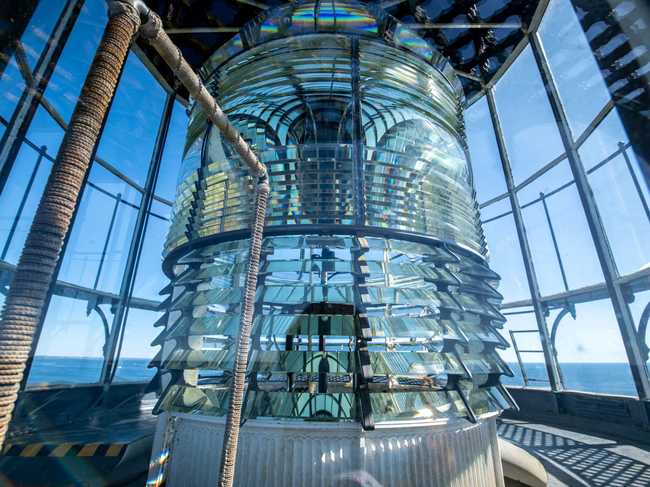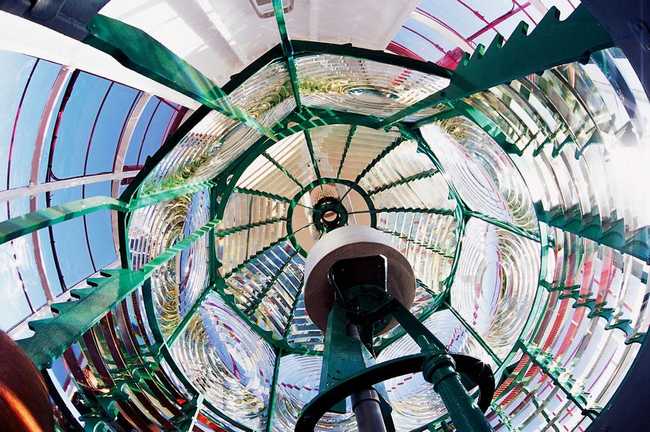Fresnel Lens And Lighthouse
The Fresnel lens used in the Seguin Island Light Station in Georgetown, Maine. Edwin Remsberg/AP
Fresnel Lens
In 1822 French civil engineer Augustin-Jean Fresnel (pronounced "Frey Nel") invented a new type of lens that produced a much stronger beam of light. The Fresnel lens is still used today in active lighthouses around the world. It also can be found in movie projectors, magnifying glasses, spacecraft, and other applications.
Inside the Lindesnes Lighthouse's Fresnel lens in southern Norway.DeAgostini/Getty Images
Preventing Shipwrecks - Backstory
Because of increasing complaints from French fishermen and ship captains about the poor quality of the light emanating from lighthouses, in 1811 the French Commission on Lighthouses established a committee under the authority of the Corps of Bridges and Roads to investigate how lighthouse illumination could be improved.
One member of that committee was Fresnel, who worked for the French civil service corps as an engineer. He had considerable expertise in optics and light waves. In fact, in 1817 he proved that his wave theory—which stated the wave motion of light is transverse rather than longitudinal—was correct. In transverse waves, a wave oscillates perpendicular to the direction of its travel. Longitudinal waves, like sound, oscillate in the same direction that the wave travels.
Fresnel’s analysis of contemporary lighthouse technology found the lenses were so thick that only half the light produced shined through.
He decided he could do better using his wave theory. His design consisted of 24 glass prisms of varying shapes and sizes arranged in concentric circles within a wire cage. The prisms, placed both in front of and behind four oil lamps, replaced both the mirror and the glass lens of the previous method. Prisms at the edge of the circle refract light slightly more than those closer to the center, so the light rays all emerge in parallel.
The design could focus nearly 98 percent of the rays generated by the lamps, producing a beam that could be seen more than 32 kilometers away.
Source : Before Ships Used GPS, There Was the Fresnel Lens
Pic Credits : Before Ships Used GPS, There Was the Fresnel Lens
